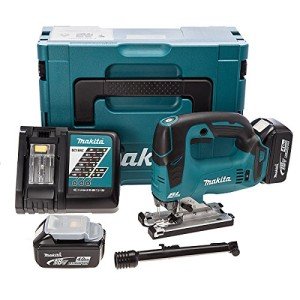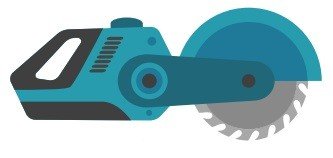The 10 Most Terrifying Things About Shop Power Tools
페이지 정보
작성자 Isaac 작성일 25-02-02 14:37 조회 7 댓글 0본문
 The Workhorse of the Shop Power Tools
The Workhorse of the Shop Power ToolsHand-held power tools are powered by electricity, internal combustion or compressed air. They may be used to cut, drill, sanding or grinding materials.
 A table saw is one of the most important power tools that every woodworker needs to own. It can handle almost any task that requires cutting. Also, consider a miter saw stand as well as a drill/driver kit.
A table saw is one of the most important power tools that every woodworker needs to own. It can handle almost any task that requires cutting. Also, consider a miter saw stand as well as a drill/driver kit.Table Saw
A table saw is the workhorse of shop power tools and perhaps the most versatile tool for woodworking. It can rip, cross-cut, miter cut, and even dado and rabbet stock. It is also able to cut angled surfaces for frames, chests or planters.
The saw has a huge circular blade which spins at high speeds. The table is large that support the stock as it is passing through the blade. A blade guard shields the saw blade, preventing wood from getting caught and possibly thrown back at the operator. The saw is also protected by a splitter, or riving blade. It is a vertical projection directly behind the blade and can be shaped like pin or fin.
Table saws that are designed for contractors have a larger motor that hinges off the rear of the saw and drives the blade using two or more rubber v-belts. These saws are mostly used by carpenters but are also found in the home shop. These saws have more features, such as a sliding mitertable, than portable ones.
Smaller table saws come with smaller motors, lighter in weight that is typically belt driven. These saws are more targeted towards hobbyists and domestic use. Many feature a sliding miter table, which lets the user make complex cuts such as those for mirror and Online Tools Store picture frames, drawers, cases, and boxes.
It is crucial to operate a tablesaw properly to avoid injuries. When cutting rips make sure to sit to the left and keep your hands from the saw's blade. When cutting, it is essential to utilize a guide block or push stick. This is especially true in commercial settings where HSE guidelines require you to keep at least one hand span from the blade.
A simple adjustable tapering tool you can build yourself is the quickest and most simple method to cut tapered legs for a variety of woodworking projects. A tapering jig can be adjusted for any angle between 0 and 15 degrees, allowing you to cut any set of tapered legs for furniture such as tables or cabinets in your shop.
Bandsaw
A bandsaw is ideal to cut various shapes from wood and metal which makes it an essential tool for custom fabrication. It's also a useful tool for furniture making, cabinetry as well as other woodworking projects. The saw can be used for cutting curved cuts like circles and is able to cut through various materials, including ice.
There are two main kinds of bandsaws: horizontal and horizontal. Vertical bandsaws are used for cutting freehand and excel at resawing as well as cutting in curved lines, while horizontal bandsaws are better at making straight and cut angles. The saw can be operated manually or by a powered feed system. Manual bandsaws require that the user manually lower and lift the blade each time they cut. Power fed systems are more efficient.
Safety is the top priority when using the bandsaw. Always wear protective gear, including safety goggles and ear protection to protect against sawdust and noise. To avoid injuries and accidents keep your feet and hands clear of the blade. It is also important to set up the saw correctly for safe operation. Make sure that the blade and guides are aligned and that the blade is secured.
Depending on the material you're cutting it could be necessary to adjust the saw's speed and feed rate to get optimal results. Regular maintenance that includes adjustments to the tension and tracking of the blade, will ensure that your bandsaw makes precise and clean cuts and prolongs the life of its.
The blade on a bandsaw is constructed from high-quality steel that's been treated to resist the stresses and fatigue of frequent use. The teeth of the saw are welded on to give it a unique shape and protecting against damage from a sudden shock.
The throat depth of a bandsaw determines the width of the piece of lumber it can cut. Larger throat depths can be used to cut larger lumber pieces and are ideal for resawing or ripping, both of which require cutting across the grain. Some bandsaws feature tilting tables that can be used to make cut angles and reuse scrap wood.
Dust Collector
Woodworking tools create a lot of chips and dust that must be gathered to safeguard your health, the shop's cleanliness and the longevity of your equipment. The kind of collector you require is determined by the number and size of the power tools online tools you employ in your woodshop as depending on the frequency at which they are used. The most effective dust collection systems for woodworking provide superior filtration to remove small particles and help you breathe healthier, more comfortable and more comfortably while you work.
Nederman offers dust collection systems to meet your needs, whether you are an individual shop or a large-scale production woodworking facility. Our woodworking dust collection waste management, combustible and waste collection dust solutions integrate care for the environment with improvements in machine productivity and quality.
There are a variety of woodshop dust collection systems available on the market, including:
A dust extractor that is basic can replace your shop vac. These devices connect to your power tools with an hose that connects to the dust port on your machine. The hose is activated when you switch on the tool and it pulls dust and debris out of your workspace.
The majority of dust extractors, contingent on the brand that you choose, are equipped with an HEPA filter to remove tiny dust particles that can cause respiratory problems over time. They also come with a higher CFM airflow (cubic feet per minute) to move more air. They might also have an airspeed indicator and a system which automatically cleans the filters.
If you have a bigger shop or prefer the flexibility to work with your woodworking online store tools on the go, consider a portable woodshop dust collector that comes with an energy-saving battery that can be recharged and dbschool.kr an in-line connection that can be connected directly to a power tool. These units are easy to transport and have the capacity to handle multiple tools at the same time. They are usually compact with a caster base. They also come with a bag for collection or reusable filter for easy emptying.
If you're a skilled woodworker, or contractor, you might require a stronger dust collection system. These are more expensive than an extractor, however they offer a wider range of filtration options. They also can be installed on the wall or in an area that is dedicated to your shop. These units can be used to clean up drywall, plaster and other demolition projects, as well as woodworking projects.
Planer
The planer is a site power tools tool that no woodshop should ever be without. It's not the most glamorous or flashy instrument, but it can make a massive impact on your ability to transform lumber that is rough into beautiful and useful projects. It can be used to reduce boards to a specific thickness. It can be used on softwoods and hardwoods. It can also be useful for working with knotty, unwieldy, or twisted stock which is impossible to handle using hand tools.
A portable planer of high quality is well worth the admission cost to any woodworking workshop. It is possible to find a good deal on a planer that is slightly used, but pay particular attention to the condition of the cutter head, as well as infeed and outfeed tables. These factors will determine the best quality tools of your planer's perform and whether or not it will last a long time before you need to replace parts. If the cutter head isn't of the highest quality, it will soon wear out and you may have to replace it within a very short amount of time.
Many people confuse the planer with the jointer, but they are not the same thing. A jointer can make an entire board straight and flat, whereas the planer can cut boards down to a specified thickness. Some woodworkers may even use the two machines in tandem to complete the task, but both are essential for any workshop that has to deal with rough lumber regularly.
A commercial-grade planer is a great investment if you plan to work with wood professionally and are in search of quality equipment. These machines are designed to be used in situations where speed of production is more important than the surface finish. These machines can save you a lot of time, but you'll need to be very cautious not to overload them or they could burn out. To ensure that they continue functioning correctly, you'll need to maintain them properly. A good shop maintenance routine can go a long way in extending the life of your planer.
댓글목록 0
등록된 댓글이 없습니다.
